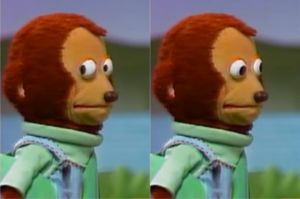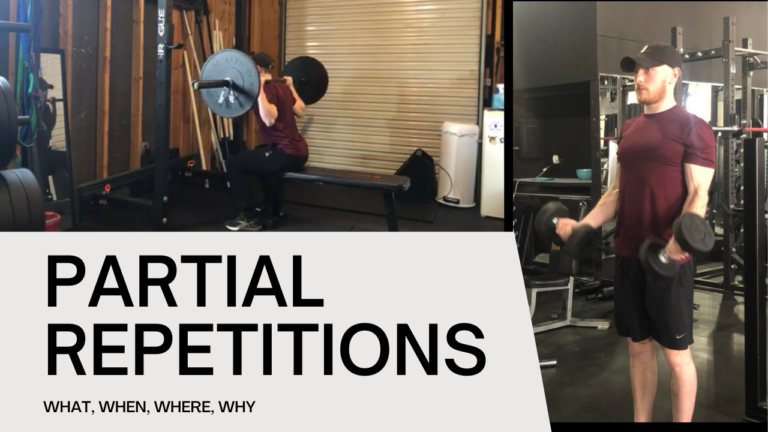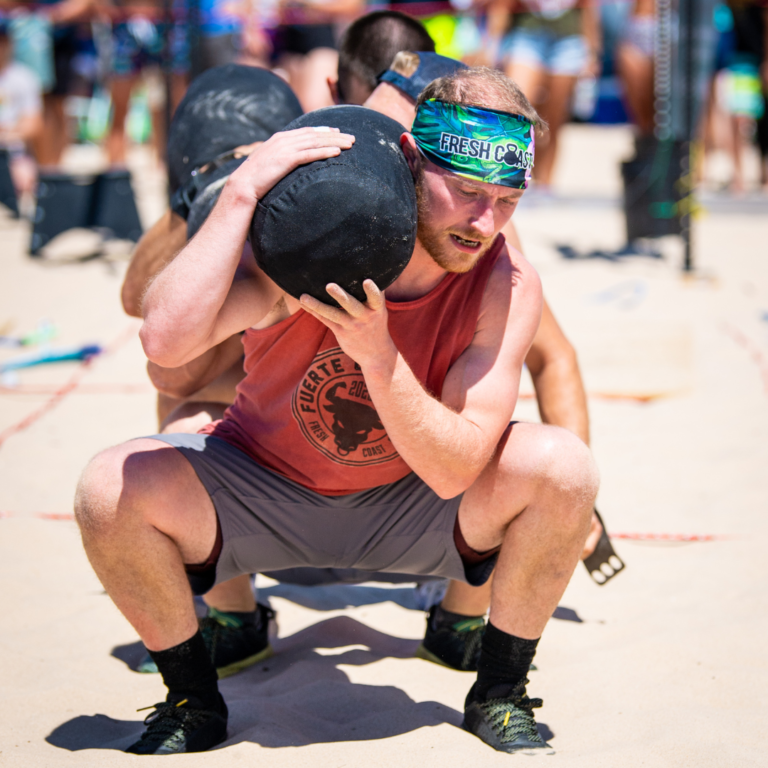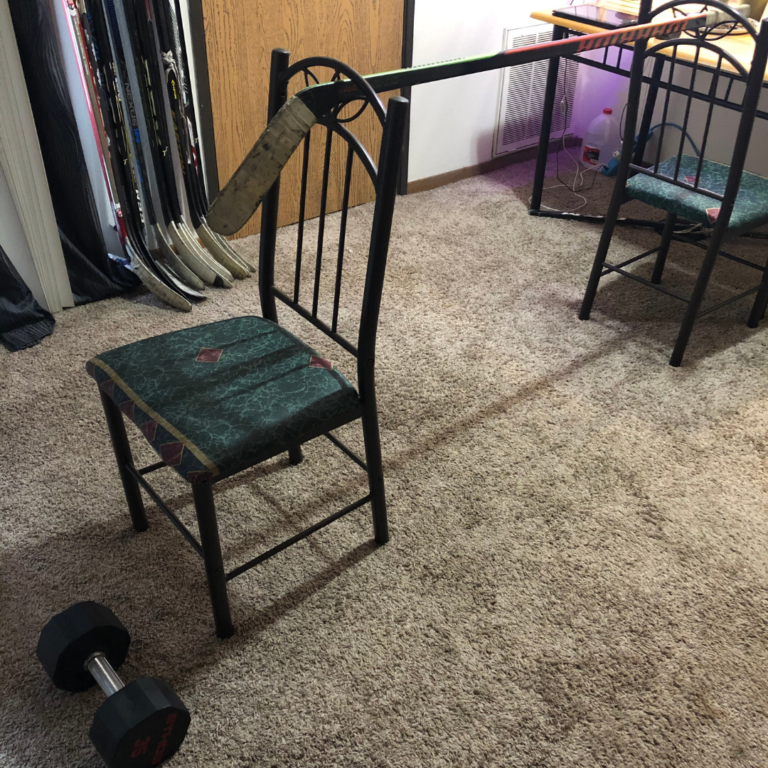Does being healthy mean we need to live a restrictive life? Do we need to choose between doing things we know are good or “healthy” and living life to its fullest or “indulging”?
Like almost all things, it depends.
It does not have to though.
I truly believe we can have the balance of striving to achieve our individual idea of fitness/wellness and not being so restrictive in our life that we feel like we are missing out, sabotaging our results, or “falling off the plan” by doing something in the moment we really want to.
——-> Mini rant: You can NEVER fall off the plan. Unless you quit. This all or nothing mentality keeps people from continuing to make more aligned decisions with their goals, All The Time! As long as you’re alive and able to adjust your next decision you can ALWAYS work toward your goals.

Sorry about that, anyways…
We can have the best of both worlds.
Continuing to make results toward our fitness/health goals while enjoying tacos, nights out with friends, and family holiday foods.
In order to do this though there are a few key things that will make sure you can achieve balance.
-Your Own Definitions/Long term goals
“If one does not know to which port one is sailing, no wind is favorable.” – Seneca
Obviously there are things outside of our control in life. There are a lot of things we can influence though that will have a compounding effect on our future.
Exercise/Movement is one of these.
Unfortunately the fitness industry has lost its way on what actual fitness, health, and wellness are and how individualized it is.
In a vanity driven, more is better, burn yourself out industry it’s no wonder people are contorting themselves to try living up to someone else’s goals and definitions of health, fitness, and wellness.
What we need is a long term blueprint and our own definitions for what we believe or want.
This way you can plan your need for exercise and the intensity/direction needed to achieve that.
One of my favorite questions to ask clients or people is what their fitness goals are for when they’re 60, 70, 80, 90 etc.
Usually people say they haven’t thought about it.
I love this question because it easily shows us priority for what we want from our training/exercise long term.
I know when I’m 80 I want to physically be able to walk pain free, sit down and stand up without assistance, get off the floor in multiple ways, be able to do bodyweight lunges, pull ups, push ups, jump rope, sprint (no matter how slow), keep up with potential grandkids etc.
Nothing about this is vanity driven or based around our culture’s perception of what fitness is. Rather, these goals are solely based around function and things that will allow me to do the things outside the gym I enjoy.
These are the types of vague long term goals or metrics we should be thinking about.
Your turn:
Simply get out a pen and paper or your notes app and answer this question,
“What activities or things do I want to be able to do when im x years old”
Want to be able to hike? Write that down. Go golfing? Write that down. Get off the floor if you fall? Write that down too. Want to compete in the senior olympics? Write it down and get working.
Then from there you can work backwards in your exercise plan to ensure you maintain the abilities, skills, strength, and other prerequisites needed to achieve these things.
All of this while doing it in a way that fits INTO your life and isn’t something you are forcing yourself to do for someone else’s goals or definition.
-What Season are you in and what is the Priority?
This next point is the biggest one in determining if something is unsustainable or just a blimp/passing cloud in your health and fitness journey needed to achieve something specific.
This forces us to take an unbiased look at ourselves and determine where we actually are in relation to our definition of health and wellness.
If we say we want to be able to live a functional life in our later years but we don’t exercise or take notice of how our nutrition and environment are affecting us then we are out of alignment.
And on the other hand, if our goal is to feel and perform better but our workouts keep us beat up and exhausted with no time to actually live life then we are also out of alignment.
This is where we need to objectively decide if something will become a focus/priority for an allotted period of time, or be a complete revamp for how we do things to achieve the results we want in a more sustainable way.
*THIS DOESN’T MEAN SOMETHING IS THE FOCUS FOREVER! This is where our health focused habits or desires can become unhealthy and restrictive.
There is a difference in changing how you move/exercise to help alleviate discomfort and avoiding exercise altogether because of pain.
There is a difference in trying to peak for a professional competition and wanting to get a little stronger or more toned.
There is a difference between being in a calorie deficit for a period of time to lose weight and ruining your thyroid by restricting yourself of seemingly everything forever.
There is a difference in healthy habits and an unhealthy relationship to a seemingly healthy habit.
This is where we need to closely look at what we are doing, our goals, results, and if it is a conscious time of focus or a misaligned effort/direction.
- -Seeing results in a sustainable way? Keep it Up!
- -Not getting results but in a sustainable way? Keep at it and ask for help if needed!
- -Seeing results in an unsustainable way? Reassess and determine if this is a short, planned period of unsustainability. If not, lower the intensity to a more sustainable level.
- -Not getting results in an unsustainable way? Change it up and ask for help!
The reason I stress the importance of this is because in order to go about living our definition of what a healthy, fit life is we need to take care of the priorities first (what we know we need to do) so that we can have more wiggle room for the YEARS to come.
Maintaining is much easier than starting, just like most things in life. (this is why the best time to make a change is always now, the longer we wait the harder it is)
This is where we need to compare where we are, where we want to go, what a REALISTIC timeline is, and our ability to work toward it.
Then plan to maintain, go hard for a little while for a specific goal, or change priority.
Everything ebbs and flows in seasons or phases.
High effort, lots of results. Lower effort, maintained or slightly diminished results.
What matters most is the next point

-How to Measure Consistency
“Use it or Lose it” -Advice we have heard too many times, but is true
While there are going to be times, seasons, or phases of varying effort or focus that doesn’t mean we stop all together.
Consistency is the biggest factor when it comes to our fitness and ultimately our health and wellness.
Real consistency is measured in months, years, and decades.
Most people focus on days or weeks, which isn’t wrong. Just short sighted.
It’s about making monthly deposits for the long term.
Working out 4 times a month (1 time a week) is better over the course of time then going hard for 2 weeks straight (14 times) once a year just to quit. *48 sessions versus 14 sessions for the year for example.
Having months where your calories per week are mostly consistent on average is better than crash/yo-yo diets, eating foods you hate, or quitting entirely.
What looking at things quarterly, bi annually, annually, by the decade etc. allows us to do is to zoom out and see the trend of the graph versus hyper focus on the smaller data points.

-Let’s Wrap it Up
What matters is applying the things above and individualizing a sustainable plan for you that is evolving to match your life to the season it’s in. All while simultaneously remaining true to your long term goals and vision.
Once these things are in order then having health/fitness on your own terms in a way that isn’t restrictive will become second nature.
You will be able to see and adapt to the fact that some moments are bigger than health and fitness. (someone bringing donuts to the office doesn’t mean we need to eat them versus it’s our kids birthday and we want to eat a piece of cake with them etc.)
This is where the balance lies.
Remember fitness, health, and wellness add to our life, not the opposite.
As long as we keep at it and never fully quit, we will see the results we are after.
To your success,
– Josh
-TLDR;
1.) Make sure you have your own definition for fitness, health, and wellness and what they look like in your life both in the short term, and the long term. This will create the blueprint on what to do to get there.
2.) Life changes like the seasons do. Sometimes we will have more time and energy to put into our health and fitness. Other times we will have to rely on habits and past efforts/results to maintain our health and fitness. This gives us 2 things to realize and analyze
a.) The sooner we can work on the things we know we need to work on the faster we will see results. Meaning, that we will build a bigger buffer for when we have potentially less time to focus on fitness or wellness down the road.
b.) If our efforts or definition of fitness/health are unsustainable or actually causing more harm than good then we need to objectively look at our goals and see if this unsustainable effort/focus is just for a short while or a misguided/unhealthy action that needs adjusting.
3.) Consistency over months, years and decades is what matters. Not days,weeks, or even months sometimes. Knowing this we can see that our efforts will be fluid and ever evolving but still steadfast toward our long term goals and vision.



